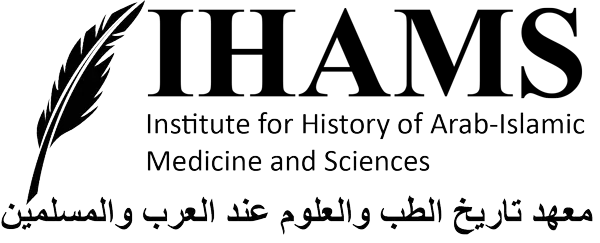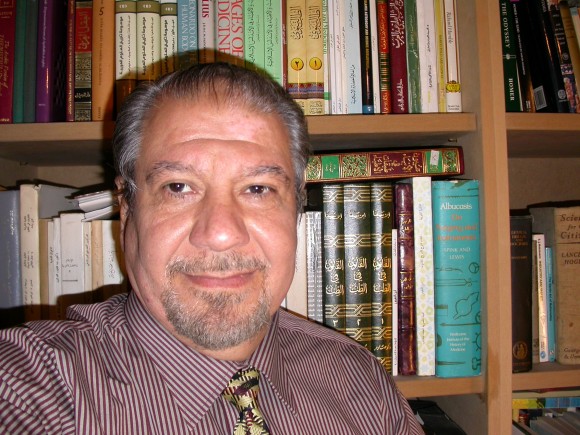The House of Wisdom:
How the Arabs Transformed Western Civilization
by Jonathan Lyons
The Times review by Ziauddin Sardar
From The Times, January 22, 2009
When Baghdad opened its gates as the new capital of the Abbasid Caliphate, the prime site in the city was occupied by the royal library. Both the city and the library, completed around 765, were built by Caliph al-Mansur, who devised a method for measuring the circumference of the Earth and was second in a long line of Abbasid caliphs who valued thought and learning above all else. The Abbasids created, shaped and developed one of the most rich and fertile periods of science in human history.
The library was officially called “the House of Wisdom”. It was a monumental structure, accommodating translators, copyists, scholars, scientists, librarians and the swelling volumes of Persian, Sanskrit and Greek texts that flooded into Baghdad. Not surprisingly, it became a magnet for seekers of knowledge from across the Muslim empire.
Jonathan Lyons tells the story of the House of Wisdom, the caliphs who suppor-ted it and the people who worked there, at a riveting, breakneck pace. In quick succession we meet scholars such as al-Khwarizimi, the illustrious Muslim mathematician and founder of algebra, the geographer al-Masudi, who described major sea routes to Persia, Cambodia and as far as the Malay peninsula in The Book of Roads and Kingdoms, and al-Kindi, the first Arab philosopher. But Lyons is more concerned with how what was happening in Baghdad and other Muslim cities was transferred to Europe. So he focuses on a string of colourful translators and scholars who travelled to the Muslim world and took its knowledge and discoveries back with them.
Adelard of Bath, for example, travelled to Antioch and Sicily in his dogged pursuit of what he called studia Arabum, the learning of the Arabs. An early pioneer of Arab teaching, he translated numerous works of spherical and theoretical astronomy, including al-Khwarizimi’s astronomical tables, which introduced a new body and vocabulary of mathematical knowledge to the West. His translation work enabled Adelard to write his treatise on the use of the astrolabe, which revolutionised the way Western man understood the Universe. Another Briton, Michael Scot, could not get enough of Muslim learning. His extensive translations of the works of ibn Rushd and ibn Sina, undertaken during the 13th century, introduce philosophy, and the Greek philosophers, to the West. Widely regarded as Europe’s first expert on Aristotle, Scot was the model for Prospero in Shakespeare’s Tempest.
Top of Form
Bottom of Form
But interest in Arab learning was not limited to scholars and translators. Many rulers, such as the Holy Roman Emperor Fredrick II, realised that Arab knowledge was a source of power. Europe knew that Arabs had developed sophisticated navigation techniques; and books such as al-Biruni’s The Determination of the Coordinates of Cities could provide accurate methods for determining geographic locations. It was this realisation that motivated the upstart king of the once-Muslim Sicily, Roger II, to commission the first global map of the world from the Muslim geographer al-Idrisi. The map, completed about 1138, depicted the world as occupying one full hemisphere, or 180 degrees, stretching from Korea in the East to the Canary Islands in the West. Al- Idrisi also wrote an accompanying text, Amusements for Those Who Long to Traverse the Horizon, known in the Arab world as The Book of Roger, which provided a description of the peoples, lands and cultures of the seven climates.
Islamic thought and learning transformed medieval Christendom beyond recognition, Lyons writes. A key import was natural philosophy, the precursor to modern science, and the idea that came with it: the notion of a university as an intellectual, cultural and social institution. Roger Bacon, the 13th-century English scientist and philosopher, travelled through Muslim Spain dressed as an Arab and was among the first to teach natural philosophy in Paris. Without these imports, Lyons says, the Renaissance would not have been possible and European “progress” as we know it would have been inconceivable. The Arabs gave Europeans their ideological and intellectual identity – indeed, Lyons suggests, “the West” itself is a Muslim invention.
But the West’s gratitude to Islam was expressed in its wilful forgetting of the Arab legacy. This process began with the successors of Adelard and Scot and had four core themes: Islam distorts the word of God; it is spread solely by the sword; it perverts human sexuality; and its prophet, Muhammad, was a charlatan, an anti-Christ. It was thus necessary to write the Arab learning out of history and to claim direct descent from Greece. As Petrarch, one of the most prominent 14th-century anti-Arab intellectuals, declared: “I shall scarcely be persuaded that anything good can come from Arabia.” Scot’s mastery of Arab learning led Dante to dump him in the lower depths of Hell, among the sorcerers.
The House of Wisdom is structured around daily Muslim prayer times, starting with Isha (nightfall) in the 10th century, when Crusades first began and Europe was shrouded in darkness. Fajr (dawn) and Zuhr (midday) follow, the period around the 11th and 12th centuries when Muslim civilisation was at its zenith. Asr (afternoon) in the 14th century marks the first appearance of “the West”. Lyons does not ask what happened at Maghrib (sunset): why did science and learning decline so rapidly?
Ehsan Masood’s Science and Islam: A History (Icon Books) gives a viable answer to this question. Masood’s eminently readable survey of science in Islam fills many gaps in The House of Wisdom by providing the social and political context in which discoveries took place. It ends with a string of observations. Science in Muslim cultures, Masood suggests, lacked a social and institutional base. Scientists did not work in universities but in or near palaces attached to wealthy patrons; and much research did not qualify for funding from charitable and social sources such as waqfs, the pious foundations. Funding depended on individual rulers and scientific discovery suffered when rulers died or had other worries.
Moreover, many of the strongest scienti-fic patrons were also among the most seriously despotic. Caliph al-Mamun, described by Lyons as “inquisitive by nature” and obsessed with science, used force to impose his rationalism. Helagu, grandson of Genghis Khan, destroyed Baghdad, yet at his side stood his personal scientific adviser, Nasiruddin Tusi, whose work laid the foundation for the Copernican revolution. The result was that science was often associated with dictators in the public imagination.
The nexus between science and the abuse of political power is much more than a coincidence, Masood argues. Even today, science is in comparatively better shape in countries with dictatorial regimes, such as Egypt, Pakistan and Iran.
But a return to the glory days of the House of Wisdom – when Arab culture was suffused with a spirit of scientific inquiry – requires science to reach down and take social roots in Muslim societies. And that will remain a nostalgic dream as long as Muslim lands are under the tutelage of dictators and despots.
Ziauddin Sardar’s latest book is Balti Britain: A Journey Through the British Asian Experience (Granta)
The House of Wisdom: How the Arabs Transformed Western Civilization
by Jonathan Lyons. Bloomsbury Publishers








